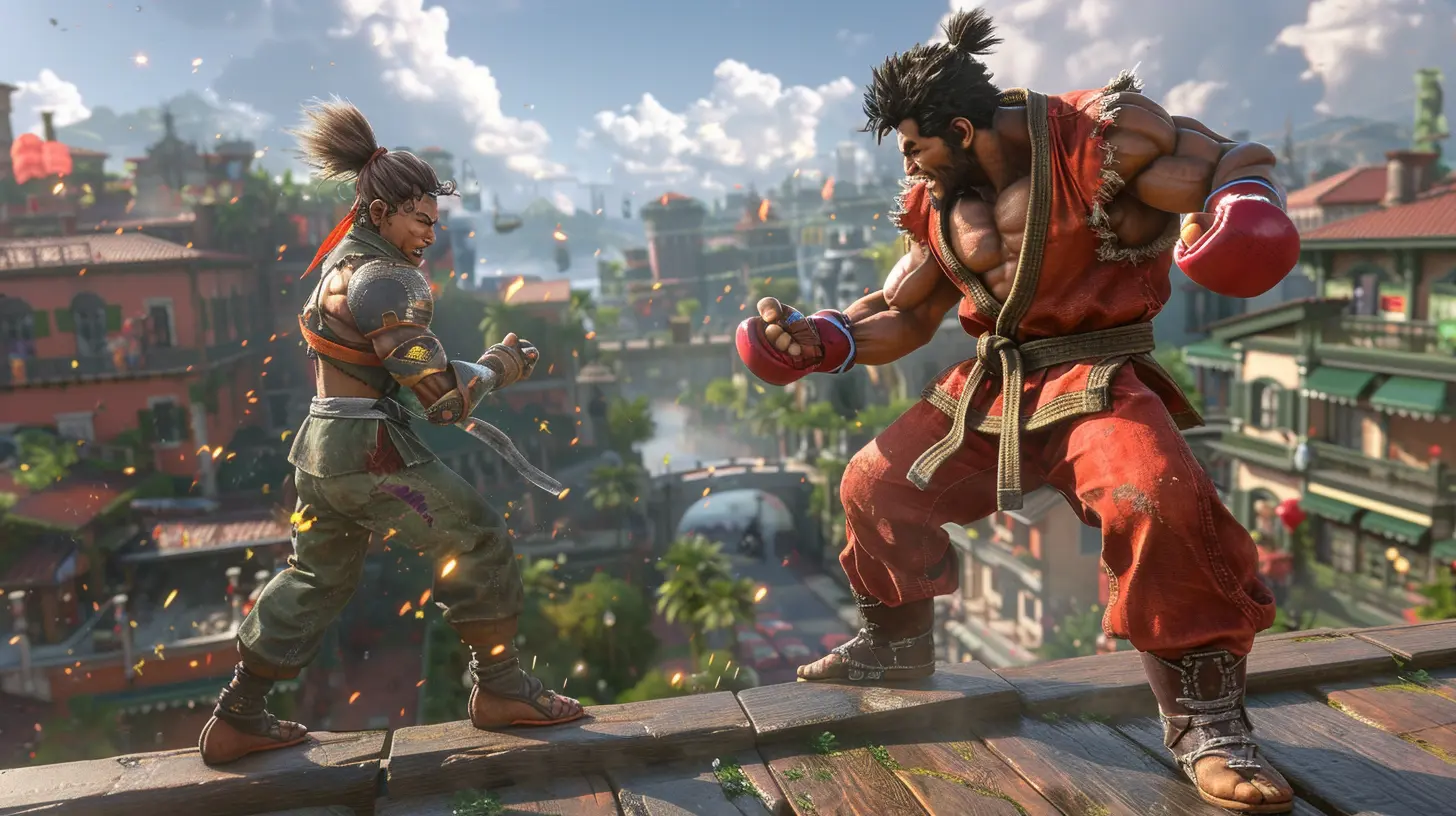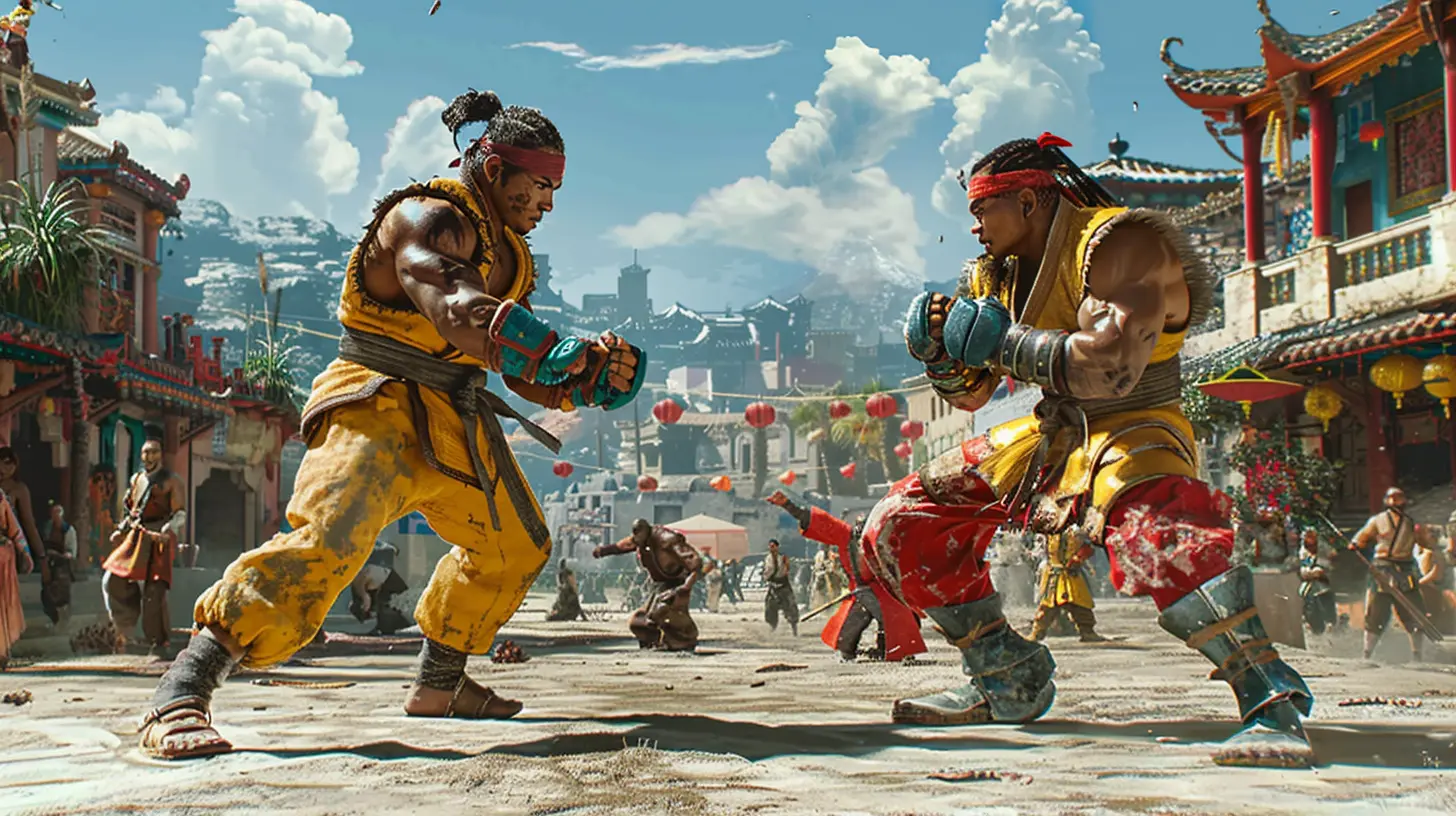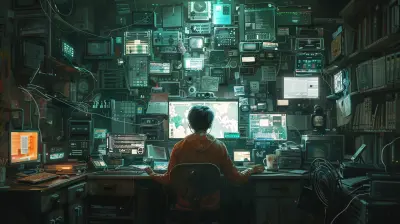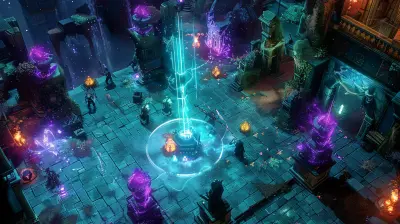The Art of Zoning: Controlling Space in Fighting Games
28 February 2025
When it comes to fighting games, there's a delicate dance that players engage in—a battle not just of fists, kicks, and combos, but of positioning and strategy. That’s where zoning comes into play. It’s the art (and, let’s be honest, science) of controlling space to dictate the flow of a match. If you’ve ever found yourself stuck at a distance, unable to approach an opponent, or repeatedly walking into projectiles—congratulations, you’ve already experienced zoning first-hand.
Zoning is a core component of fighting games, one that separates beginners from pros. Whether you're a seasoned player or someone just dipping their toes into the genre, understanding zoning is crucial to leveling up your game. So grab your arcade stick or controller, and let’s break this down. What exactly is zoning, why does it matter, and how can you get better at it?
What is Zoning?
In plain terms, zoning is all about controlling the space between you and your opponent. Think of it as a game of tug-of-war, but instead of a rope, you're using attacks, projectiles, and movements to assert dominance over key areas on the stage. The goal? Force your opponent into situations where they make mistakes, and capitalize on them.Zoning isn’t about mindless spamming. Sure, throwing Hadoukens with Ryu all day might look like zoning, but without intention and strategy, you’re just pressing buttons. True zoning requires careful positioning, an understanding of your character’s toolkit, and reading your opponent’s tendencies. You're creating a virtual barrier that says, “This is my space. Enter at your own risk.”
The Fundamentals of Zoning
Zoning might sound simple on paper, but mastering it takes time and practice. There are several core concepts you’ll need to grasp before you can use zoning effectively:1. Control the Neutral Game
The neutral game is where zoning really shines. It's the phase of a match when neither player has a clear advantage, and both are vying for control of the stage. Think of this as a chess match where every move positions you to strike—or to defend.Zoning helps tip the scales in your favor by creating an invisible wall of pressure. You can do this with projectiles, long-range normals (attacks), or even movement that keeps the opponent guessing. Characters like Dhalsim in Street Fighter or Fulgore in Killer Instinct thrive in the neutral game because their tools are tailor-made for zoning.
2. Spacing and Range Awareness
Good zoning requires excellent spacing. You need to know the exact range of your character’s attacks and how they stack up against your opponent’s. Are you playing a character with short-range moves? Then it’s all about closing the gap. Got a fighter with long limbs or screen-filling projectiles? Keep your opponent at bay where they can't reach you.Spacing is like playing keep-away, but with a purpose. Picture yourself putting up a fence. You don’t want your opponent to leap over or break through it, right? That's where knowing your optimal range comes in. Zoning is all about finding that sweet spot where your attacks are dangerous, but you’re still safe.
3. Controlling the Tempo
If zoning is the art of space control, then tempo is the heartbeat of the match. A good zoner doesn’t just create barriers; they dictate the pace of the game. This is where zoning becomes a psychological battle. Are you forcing your opponent to chase you? Are you baiting them into risky moves? Are you frustrating them enough to make mistakes?Tempo control is especially important in matches where your opponent tries to rush you down. Characters who rely on close-range combos (like Tekken’s Hwoarang or Guilty Gear’s Chip Zanuff) hate being zoned. It disrupts their rhythm and forces them to play on your terms—not theirs.
4. Risk vs. Reward
Zoning isn’t foolproof. Every attack comes with its own risk-reward ratio. For example, throwing fireballs from full screen might seem low-risk, but what happens if your opponent jumps over them? Suddenly, you’re wide open for a punishing combo.Good zoners know how to minimize risk. They mix up their attacks, avoid becoming predictable, and prepare for counterattacks. Always ask yourself: “Am I zoning to create pressure, or am I zoning recklessly?” If it’s the latter, you’re going to have a tough time winning matches.
Tools of the Trade: Zoning Techniques
Different characters have different zoning tools. Here are a few techniques that’ll help you master the art of zoning:1. Projectiles
Projectiles are the bread and butter of zoning. Characters like Guile (Street Fighter) or Deadshot (Injustice 2) make heavy use of them to create barriers. But remember, projectiles aren’t a one-size-fits-all solution. Use them strategically. For example, mix up your speeds or angles to catch your opponent off guard.2. Long-Range Normals
Some characters don’t need projectiles to zone effectively. Take Sagat’s heavy kicks or Marth’s sword slashes in Super Smash Bros. These long-range moves can keep opponents at bay and punish them for getting too close.3. Anti-Airs
This is your insurance policy against opponents who love to jump in. Having a solid anti-air (like an uppercut or upward projectile) deters opponents from trying to bypass your zoning tools. If they jump recklessly, make them pay.4. Movement and Footsies
Zoning isn’t just about throwing out attacks; it’s also about moving intelligently. Proper use of footsies (the art of spacing with movement and pokes) allows you to maintain that perfect distance where you can attack while staying safe.
Common Zoning Mistakes to Avoid
Even the best players sometimes mess up their zoning. Here are some common pitfalls to watch out for:- Becoming Predictable: Spamming the same move over and over is like handing your opponent a playbook of your strategies. Mix it up and keep them guessing.
- Neglecting Defense: Good zoning is proactive, but it also requires solid defense. Don’t forget to block, tech throws, or avoid overextending yourself.
- Losing Focus on the Objective: The goal of zoning isn’t to annoy your opponent (although that's a fun side effect). It’s to create opportunities for big damage or to maintain stage control.
Adapting to Your Opponent
What makes zoning so fascinating is that it’s a two-way street. While you’re trying to control space, your opponent is trying to counter your strategy. Maybe they’ve got a projectile reflector, or they’re incredibly fast at closing the gap. This is where adaptation comes into play.Pay attention to their patterns. Are they jumping over your fireballs every time? Start throwing fake-outs or switching to anti-airs. Are they walking you down? Use your movement to reset the spacing. Zoning is never static—it’s dynamic, evolving with each match.
Why Zoning Matters in Competitive Play
If you’re serious about improving in fighting games, you’ll need to master zoning. It’s not just for “cheap” players or specific characters; it’s a universal skill. Even grapplers, who are typically weak at zoning, use spacing and positioning to get in close.Zoning teaches you patience, precision, and how to outthink your foe. It’s a cornerstone of fighting game fundamentals, and once you start to grasp it, you’ll notice your overall skill improving. Matches will feel less chaotic, and you’ll start dictating the terms of engagement instead of reacting to your opponent.
Final Thoughts
The art of zoning isn’t just about keeping your opponent out—it’s about controlling the entire flow of the match. It’s about making your opponent play your game, on your terms. Mastering zoning takes time, but once you do, you’ll notice a huge shift in both your confidence and performance.So, if you’re tired of getting steamrolled by rushdown players or endlessly frustrated by opponents who seem to “out-think” you, it’s time to invest in zoning. Practice spacing, learn your tools, and start controlling that space like a pro. After all, fighting games aren’t just about pressing buttons—they’re about strategy, timing, and the mind games that separate good players from great ones.
all images in this post were generated using AI tools
Category:
Game StrategiesAuthor:

Jack McKinstry
Discussion
rate this article
5 comments
Bryson Jacobs
Zoning is crucial; mastering it can turn the tide.
April 7, 2025 at 3:26 PM

Jack McKinstry
Absolutely! Mastering zoning can significantly influence match outcomes by controlling the pace and space in combat.
Lumen Ramos
Great exploration of zoning! It’s crucial for strategy and adds depth to fighting games.
March 14, 2025 at 3:55 AM

Jack McKinstry
Thank you! I'm glad you found the article insightful—zoning truly is key to mastering strategy in fighting games.
Peregrine Kline
Absolutely loved this article on zoning in fighting games! 🎮 The insights into controlling space really enhance the gameplay experience. It's amazing how strategy and skill intertwine. Can't wait to implement these tips in my next match! 🥳
March 6, 2025 at 5:38 PM

Jack McKinstry
Thank you so much! I'm glad you enjoyed the article and found the tips helpful. Best of luck in your next match! 🎮🥳
Carmen Bowers
This article insightfully highlights the nuanced mechanics of zoning in fighting games, demonstrating how spatial control transcends mere distance management. By examining character-specific strategies and the psychological aspects of player interactions, it reveals zoning as a vital art form that enhances tactical depth and enriches the overall gameplay experience.
March 3, 2025 at 3:45 AM

Jack McKinstry
Thank you for your thoughtful comment! I'm glad you found the exploration of zoning's complexities and its impact on gameplay engaging. Your insights highlight the depth of strategy involved in fighting games.
Sasha Stewart
Oh great, just what I needed—more strategies to lose my matches elegantly!
March 2, 2025 at 4:55 PM

Jack McKinstry
I appreciate your sense of humor! Mastering zoning can actually help turn the tide in your favor. Give it a try!




